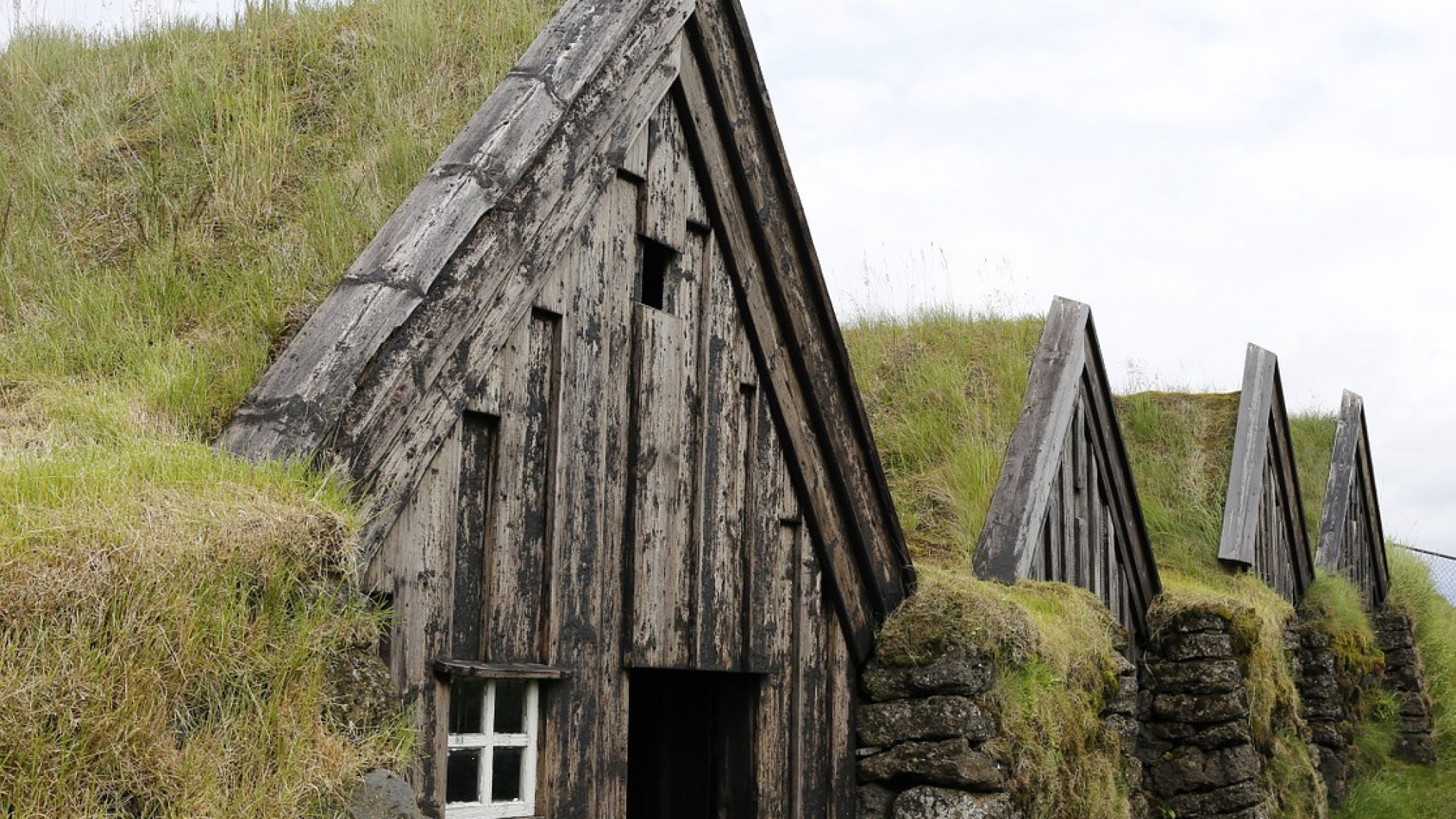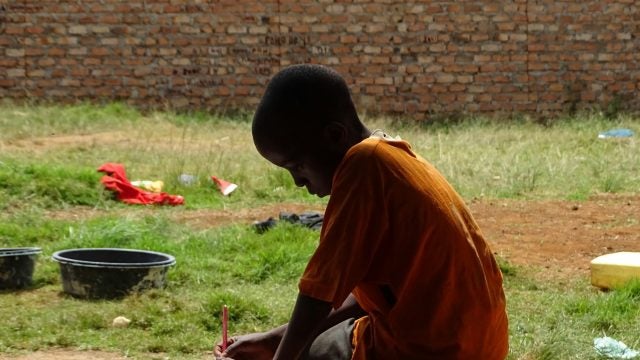
Title: PART II: Encounters of Humans and Hidden Powers in Sacrosanct Places
The below article is the final installment of a two-part series. This installment is titled “The Urgent Environmental Implications of Traditional Icelandic Elf Beliefs.”
Some claim that education, technological progress, and a scientific worldview slowly uproot the supernatural. However, arguments about the veracity of folklore do not get us very far when we consider the function that sacrosanct places serve in Iceland, where traditional elf belief continues to impact construction and influence political decision-making. The belief revolves around the premise that certain natural areas have inviolable value regardless of temporary human wants and needs. According to this folk belief, “grave misfortune might befall those who disturb any rock or stone, any cliff or hill that accommodates elves or hidden people.”
Cultural notions of sacred or enchanted places in nature are in no way unique to Iceland, as such places are found worldwide across cultural contexts in a variety of forms. Elf belief is a heritage of the traditional Icelandic farmer’s society, but such belief was relatively wide-spread throughout Europe only a few centuries ago. Although such belief has largely perished, it seems to have survived in Iceland, in some parts of Ireland, and even in Newfoundland. Furthermore, elf belief is only one expression of the more general phenomenon of sacrosanctity.
Reverence of nature is not restricted to folklore. It is, for instance, very present in so-called “ecocentric” views of nature, as put forth by Norwegian environmental philosopher Arne Næss and Icelandic philosopher Páll Skúlason. Ecocentrism plays a prominent role in the discourses of contemporary philosophy and environmental studies. I propose that traditional Icelandic elf beliefs and their respective sacrosanctity may be considered instances of an ecocentric worldview that has fundamental implications for the world today. In light of contemporary demands for a healthier relationship between man and nature amidst grave climate change, it is important to renew the ancient belief in the sacrosanctity of certain places in nature because they are of great environmental importance in this time of unprecedented urgency.
Anthropocentric and Ecocentric Views
The fundamental tenet of Icelandic elf belief—the respect for nature and natural power that is not subservient to the short-term interests of man—overlaps with the ecocentric theories of Arne Næss and his critique of anthropocentric perspectives of nature. Næss claims that anthropocentrism has prevailed for the past few centuries and is grounded in a human perspective of nature, framed predominantly in terms of temporary human interests that ultimately view nature as a resource for humans. Anthropocentric views are grounded in traditional anthropocentrism, where man is framed as the sole moral agent on Earth and therefore is morally accountable only toward other humans, while nature is valued only in terms of human interest.
Ecocentric perspectives abandon this anthropocentric notion of nature. Næss instead insists that nature has its own intrinsic value—that nature is an independent reality existing regardless of humans and therefore should be valued and understood in its own terms. Ultimately, framing human interests through an ecocentric worldview is more sustainable than the anthropocentric perspective because it is an attitude that will “benefit us all in the long run.”
Sharing Land
Sacrosanctity is a view that endows nature with intrinsic value, which is often at odds with the immediate concerns of humans. This is the moral of many Icelandic elf tales, where those who attend only to their own temporary interests are punished gravely. However, it also underscores how the interests of the hidden people, elves, and natural places may be linked with human interests in the long run.
In Hafnarfjörður, the town where I grew up, there is a hill called Jófríðarstaðarhóll where a number of old and new tales about sacrosanctity and elven dwellings take place. The most prominent is the story of Hendrik, a farmer who cleaved a stone on the hill early in the twentieth century. His action has dire consequences—his daughter falls ill with a mysterious disease and dies shortly after, and he becomes destitute and has to give up the land. A century later, however, in 2007, the town council supported the sale of the land for development into fifteen luxury apartments with perfect views of the capital area. These plans were met with disapproval by more than three hundred people in town who were familiar with the sacrosanctity of the place and appreciated the open green space. After some public fuss and furor, the developments were abandoned, and the hill remains undisturbed today.
Stories of Icelandic elves, such as this one, are concerned with and demonstrate the significance of the sharing of land. The notion that our most immediate environment is sacrosanct and inhabited by elves emphasizes that man is not the sole purveyor of land; man instead shares it with others who must be considered and respected. The story of Jófríðarstaðir also emphasizes that land is shared with future generations, highlighted by the fate of the farmer’s daughter.
Elf Belief and Climate Change
The presence of the supernatural and the sacrosanct in, or in close vicinity to, the man-made environment affords us an opportunity to experience our surroundings in an ecocentric way, rather than anthropocentrically. Non-human parts of nature are celebrated instead of being subjected to human needs and intentions, because according to the ideal of sacrosanctity, “the landscape accommodates life that is at least equal in standing to humans, although they may not directly notice its presence.” Today, elves function as personifications of nature or natural spirits in Iceland. Fundamentally, contemporary Icelandic elf belief is exemplified in discourse and reflections about respect for nature and natural features.
The challenge of non-anthropocentric accounts of material reality and nature is exciting and necessary amidst today’s urgent climate crisis. Icelandic elf belief and sacrosanctity are not solutions to this crisis, as sacrosanct areas in Iceland are often small. However, if society thoughtfully engages with the challenge of sacrosanctity, perhaps the “old nonsense superstition” can contribute to how we perceive nature and where we view ourselves within it. This function of sacrosanctity in the context of natural protection ultimately poses a question to humans about the possible results of our actions for present and future generations. In this way, the supernatural in nature challenges us to reflect—to look at ourselves as part of a larger system that extends far beyond our present time and existence. This challenges the view of many that the supernatural and nonhuman forces of nature should be dismissed as an unscientific approach to reality.
The contemporary man may still not think much of the content of this folkloristic material. Hopefully, however, it becomes clear that the function of sacrosanct nature carries a message that concerns us, both today and in the future: “Grave misfortune might befall those who disturb any creek or stream, any rock or stone, any tree or hill.” It is this function of superstition and myth concerning the protection of nature directly that we must seriously consider amidst the ongoing climate emergency. Sacrosanct places might continue to have a very important role to play not only due to their occasional contribution to the natural and environmental protection in Iceland but also precisely because they challenge universal notions about the complete superiority of man over nature.
. . .
Bryndís Björgvinsdóttir is a folklorist and Associate Professor at the Iceland University of the Arts. She also has written fiction for children and young adults and has authored books in the fields of folklore, design, and history. She was awarded the Iceland Literary Prize in 2015.
Related Articles

Amid stalled U.S. federal climate engagement and intensifying transatlantic climate risks, subnational diplomacy has emerged as a resilient avenue for cooperation. This article proposes a Transatlantic Subnational Resilience Framework (TSRF)…

The 1997 hijab ban in Türkiye left lasting effects on Muslim women’s psychological, social, and religious identities, shaping their experiences across academia, bureaucracy, and politics. Evidence from interviews…

This article advances the idea that teaching children their mother tongues and learning adjacent national languages offers better prospects for consolidating nation-building and contributing to cultural preservation. Kenya’s case illustrates…